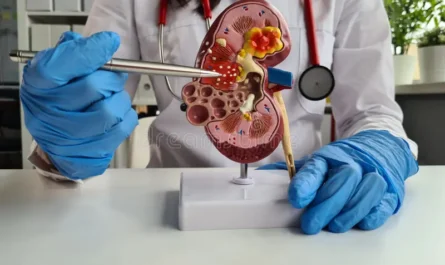
Medical aesthetics has become a $15 billion industry worldwide. As technology advances and more non-surgical procedures are made available, increasing numbers of people are turning to aesthetic treatments to enhance their appearance. This article explores some of the most popular procedures performed today and the growth of medical aesthetics as a field.
Popularity of Non-Surgical Procedures
Non-surgical procedures like injectables, laser treatments, and body contouring make up the largest part of the medical aesthetics industry. Procedures like Botox, fillers, laser hair removal and skin resurfacingtop the list of the most commonly performed treatments. According to the American Society of Plastic Surgeons, over 7.4 million Botox procedures and 2.6 million filler treatments were performed in the U.S. in 2018 alone.
The minimally invasive nature and shorter recovery time of these procedures has contributed greatly to their rise in popularity. Patients like that results are noticeable but subtle and recovery does not require extensive time off from work or daily activities. Laser procedures are also popular for hair removal, acne scarring, skin rejuvenation and more due to their ability to treat targeted areas with precision.
Growth of Body Contouring Treatments
While facial procedures still dominate the industry, body contouring treatments are growing rapidly as more options become available. Non-invasive fat reduction treatments use various forms of energy like cryolipolysis, ultrasound or radiofrequency to disrupt and eliminate fat cells. These treatments target problem areas like the abdomen, flanks, back, thighs and chin with reported fat reduction of 20-25% on average.
Surgical body contouring like liposuction remains one of the most common cosmetic surgical procedures. However, demand has increased for less invasive options. Outpatient procedures are estimated to grow 11-15% annually as technology improves. Patients feel more comfortable starting with non-invasive options before considering surgery. The growing obesity epidemic has also fueled greater demand to address stubborn fat deposits.
Advancing Technologies in Aesthetics
New technologies continue to be developed and approved for the medical aesthetics field. Technologies like laser resurfacing, intense pulsed light (IPL) and radiofrequency have seen substantial innovation over the past decade to achieve better results with less discomfort or downtime. Existing technologies are also finding new applications. For example, laser hair removal devices now target smaller areas like upper lip and underarms for more precise results.
The Future of Medical Grade Skincare
Skincare is a huge part of the aesthetics industry as consumers seek in-office solutions to supplement their home regimens. Medical grade skincare formulated with active ingredients like vitamins C and E, hyaluronic acid, peptides and growth factors deliver visible anti-aging results when combined with treatments. The market for professional-strength skincare continues growing as consumers appreciate multi-modal anti-aging approaches.
Many practices now offer custom prescriptive skincare developed specifically for an individual’s skin concerns after analyzing factors like texture, tone, hydration levels and presence of sun damage, acne scarring or hyperpigmentation. Medical grade skincare adds an additional revenue stream for practices and continued benefits for their patients looking to maintain results between treatments.
Growing Demand Calls for Trained Providers
As more Americans seek aesthetic treatments, the demand for experienced providers has grown exponentially. Most states now require some level of licensing or certification to administer injectables, operate laser devices or perform body contouring procedures. Many medical spas and dermatology practices employ nurse injectors, laser technicians and medical estheticians who undergo extensive training.
The increased regulations and standards are meant to ensure safety and quality of care. Training programs through organizations like the American Academy of Aesthetic Medicine provide comprehensive education on aesthetic techniques as well as anatomy, biology, product knowledge and business. Some states are also recognizing aesthetics as a notable specialty, with licenses and certifications specific to medical aesthetics appearing. This level of credentialing aims to protect consumers and solidify aesthetics as a distinct field within the medical industry.
Conclusion
As patients continue to value more youthful and defined appearances, they will drive further demand for aesthetic treatments. Technologies and techniques are rapidly advancing through innovation and combination therapies while regulations aim to uphold safety. Medical aesthetics has clearly cemented itself as a mainstay of the healthcare industry, delivering enhanced self-confidence and quality of life for the millions who choose these procedures each year. Looking ahead, the field shows no signs of slowing its tremendous growth worldwide.
*Note:
- Source: Coherent Market Insights, Public sources, Desk research
- We have leveraged AI tools to mine information and compile it


